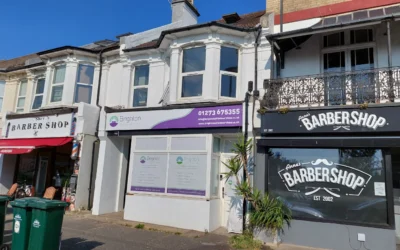One of most frequent requests I get from prospective clients is for residential annexe accommodation. Considering annexes are such a regular topic for development control, it is surprising how few local planning authorities issue guidance on the matter.
Is permission required to convert an existing curtilage outbuilding into an annexe? What about new build? What facilities can the annexe contain without the need for express permission? And once it’s built, who can reside in the annexe without it becoming a separate dwelling? And is ‘annexe the noun’ spelt with our without a second ‘e’? Enquiring minds need to know.
This is not always straightforward, and I’ve found that authorities can vary on their answers to these sorts of questions. As one planning consultant drily put it, knowing who can live in an annexe is like trying to nail jelly to a wall.
There is of course a useful body of case law and appeal decisions to steer these often vexing questions. The starting point is usually Uttlesford DC v SSE & White (1992). Uttlesford established that where an existing outbuilding used incidental to the main dwelling house is converted to self-contained annexe accommodation, this is not development provided the annexe is occupied by a dependent relative or family member, and no separate planning unit is created.
Subsequent appeal decisions have reinforced the Uttlesford judgement.
How many times has an LPA asked you for a planning application for conversion of existing domestic outbuilding to self-contained annexe for your client’s nearest and dearest? Next time, quote Uttlesford to them.
If your client is proposing to erect a new building in their garden to house an elderly relative then it’s a different matter, planning permission is required. And no, there isn’t a loop hole whereby one can erect an incidental shed or home office, and then the next week convert it to an ancillary annexe. The leading court case in respect of this is Rambridge v SSE & E Herts DC (1997), wherein the judge concluded that to build on one day and convert the next would be a “sham”, in other words an abuse of the planning system.
Once it’s been established whether permission is required for any operational development, we turn to the question of who can live in the annexe. I’ve received annexe planning permissions with conditions to control occupation referring to s258 of the Housing Act 2004. In fact, the Housing Act definition of household or family is irrelevant to planning; what matters is fact and degree. Is there a functional relationship between the occupants of the main dwelling and the annexe? Do they form a single household, as required by Use Class C3? Can a household be formed of people who are not related to each other? For example friends or students who house-share? If that’s the case, can an unrelated household include annex accommodation?
Whilst it is usually agreed that family members along with married or unmarried partners form part of the household (see Uttlesford), what about live-in staff? They too can form part of the household. And this is where it all starts to get a little murky. In deciding whether there is a clear functional relationship, the courts and Inspectors have considered the nature of the employment, the number of days per week the employee works in the main house and so on.
In Whitehead v SoS & Mole Valley DC (1991) a converted barn providing self-contained accommodation for a house-keeper was deemed to be incidental (not ancillary) to the main house, because, the judge opined, incidental uses are those connected with the running of the dwelling-house. It mattered not, according to the learned judge, whether the building, as converted, happened to include its own kitchen and bathroom.
I confess, that after reading Whitehead I started to feel that there was less of a clear distinction between ‘ancillary’ and ‘incidental’ than I had previously supposed. Was I in jelly nailing territory?
Moreover, ‘functional relationship’ does not apply merely to the persons residing at the property. It includes having shared electricity and water meters, and shared use of accesses, parking areas and the garden.
So here’s a closing curve ball. My hypothetical client has a long term friend. His offers his friend accommodation in his self-contained annexe, located snugly within the curtilage with shared use of the garden. All the services are on a single meter and they share the bills. The friend pays no rent and the home-owner and his friend share all the chores around the property. Separate self-contained dwelling-house, or annexe with its own planning unit? You decide.



